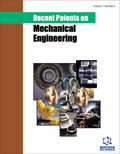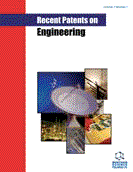Abstract
In recent years, many patents have been devoted to developing methods and means of producing driving force in different types of underwater vehicles. This paper considers fish-like designs of underwater vehicles with oscillating tails and fins. On the base of dynamic analysis of a robotic fish motion, two original methods to produce driving force have been recently patented. The first method is based on the cyclic variation of the effective working area of the fin during the operation of a propulsive device. The optimal control law for variation of an additional area of a vibrating fin has been found. It is shown that the realization of this law ensures maximal positive impulse of driving forces and minimizes energy losses. New designs of one-tail and two-tail propulsive devices with varying working area of vibrating fin have been patented. In accordance with another developed method, driving force is produced by an internal two-stage gyroscopic device. In this case, vibrations of the tail of the fish are generated due to the action on it of reaction torque from a swinging internal high speed rotor with two degrees of freedom. The proposed device has no external moving parts; therefore, its operation in various surroundings becomes more reliable and effective. The results of theoretical study are confirmed by experiments with robot fish models.
Keywords: Fin, internal gyrodrive, optimal control, propulsive device, robotic fish, underwater vehicle, vibrating tail, dynamic model, mathematical analysis, gyroscopic method.
Recent Patents on Mechanical Engineering
Title:New Methods and Devices to Produce Driving Force in Underwater Vehicles
Volume: 5 Issue: 3
Author(s): Janis Viba, Semyon Tsyfansky, Vitaly Beresnevich, Janis Auzins, Maarja Kruusmaa and Guntis Kulikovskis
Affiliation:
Keywords: Fin, internal gyrodrive, optimal control, propulsive device, robotic fish, underwater vehicle, vibrating tail, dynamic model, mathematical analysis, gyroscopic method.
Abstract: In recent years, many patents have been devoted to developing methods and means of producing driving force in different types of underwater vehicles. This paper considers fish-like designs of underwater vehicles with oscillating tails and fins. On the base of dynamic analysis of a robotic fish motion, two original methods to produce driving force have been recently patented. The first method is based on the cyclic variation of the effective working area of the fin during the operation of a propulsive device. The optimal control law for variation of an additional area of a vibrating fin has been found. It is shown that the realization of this law ensures maximal positive impulse of driving forces and minimizes energy losses. New designs of one-tail and two-tail propulsive devices with varying working area of vibrating fin have been patented. In accordance with another developed method, driving force is produced by an internal two-stage gyroscopic device. In this case, vibrations of the tail of the fish are generated due to the action on it of reaction torque from a swinging internal high speed rotor with two degrees of freedom. The proposed device has no external moving parts; therefore, its operation in various surroundings becomes more reliable and effective. The results of theoretical study are confirmed by experiments with robot fish models.
Export Options
About this article
Cite this article as:
Viba Janis, Tsyfansky Semyon, Beresnevich Vitaly, Auzins Janis, Kruusmaa Maarja and Kulikovskis Guntis, New Methods and Devices to Produce Driving Force in Underwater Vehicles, Recent Patents on Mechanical Engineering 2012; 5 (3) . https://dx.doi.org/10.2174/2212797611205030167
| DOI https://dx.doi.org/10.2174/2212797611205030167 |
Print ISSN 2212-7976 |
| Publisher Name Bentham Science Publisher |
Online ISSN 1874-477X |
 165
165
- Author Guidelines
- Bentham Author Support Services (BASS)
- Graphical Abstracts
- Fabricating and Stating False Information
- Research Misconduct
- Post Publication Discussions and Corrections
- Publishing Ethics and Rectitude
- Increase Visibility of Your Article
- Archiving Policies
- Peer Review Workflow
- Order Your Article Before Print
- Promote Your Article
- Manuscript Transfer Facility
- Editorial Policies
- Allegations from Whistleblowers
- Announcements























